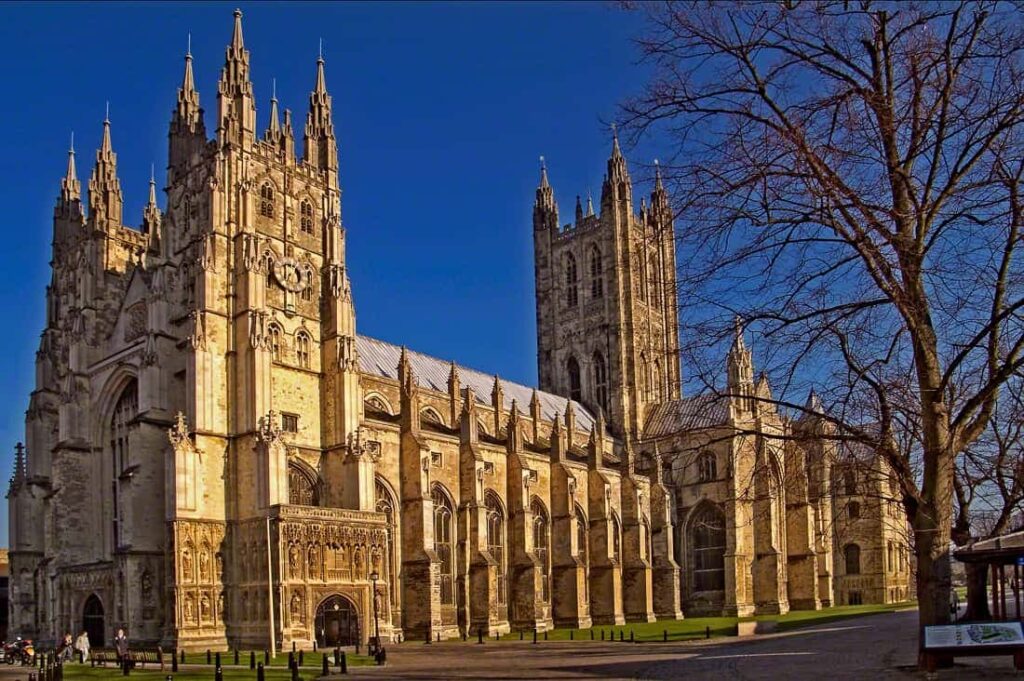The history of the Anglican Church is not merely a religious chronicle, but a mirror of the political, social, and cultural changes that have swept through England and the English-speaking world from the 16th century to the present. Emerging from a dramatic conflict between monarchy and papacy, Anglicanism became an independent branch of Christianity that still plays a significant role not only in the spiritual life of the United Kingdom but also in the international context.
In an era when modern individuals can freely switch between educational lectures, digital tours, movie platforms, or even entertainment websites such as novecasino.net, which features trusted online casinos, interest in religious heritage remains relevant. This is especially true of phenomena where religion is closely intertwined with the history of power.
The Break with Rome: Religion as a Tool of Political Control
The Reformation in England did not begin with theological disputes but with King Henry VIII’s desire to obtain a divorce, which the Pope refused to grant. This seemingly personal drama in fact revealed deep-rooted tensions between the English Crown and Catholic influence. In 1534, Henry VIII passed the Act of Supremacy, declaring himself head of the new Church of England. This marked the beginning of Anglicanism—a new branch of Christianity formally close to Catholic tradition, but subordinated not to Rome, but to the monarch.
At first, Anglicanism preserved many outward characteristics of Catholicism: liturgy, hierarchy, and church architecture. However, the key development was that control over the church shifted to the state. Thus, religion became one of the instruments for strengthening central authority, and the Anglican Church became a symbol of England’s independence from foreign influence.
Elizabethan Stabilization and Doctrinal Formation
After brief and turbulent years of religious instability under Edward VI and Mary I, the reign of Elizabeth I became a time of consolidation. Under her leadership, the Church of England acquired clear features: the “Thirty-Nine Articles of Religion” were adopted, defining Anglican theology. These articles sought to combine elements of Catholic and Protestant tradition, forming the so-called “via media”—the middle way—that allowed Anglicanism to maintain flexibility and internal tolerance.
Elizabeth understood that religious discord could undermine the stability of the state, and so she promoted a moderate form of Anglicanism that could satisfy both traditionalists and reformers. This approach laid the foundation for the long-term resilience of the Anglican Church and its adaptability to societal change.
From Colonies to a Global Network: Growth and Influence
With the expansion of the British Empire, Anglicanism extended beyond England, spreading across North America, Africa, Asia, and Oceania. Unlike some other missionary efforts, however, the Anglican Church often adapted to local contexts. This allowed it to remain relevant even after the fall of the empire. In the 20th century, the Anglican Communion was formed—a global network of autonomous Anglican churches united by a shared history and spiritual heritage, but operating independently.
In the Czech Republic, the Anglican community is relatively small but present through churches oriented toward international communities and English-speaking residents. Especially in Prague, one can find places of worship that bring together believers of different nationalities. Interest in Anglicanism is also maintained through cultural and academic study, theatrical productions, literary festivals, and dialogues on religious identity.
The Modern Era: Challenges and Renewal
Like other traditional denominations, the Anglican Church faces a number of challenges: declining attendance, a growing number of non-religious citizens, and criticism from both progressive and conservative movements. At the same time, the Church of England is actively seeking paths to renewal. Many parishes now offer online services, engage in environmental and social initiatives, and support aid programs for migrants and the poor.
Some issues—such as the ordination of women, attitudes toward the LGBTQ+ community, and interpretation of biblical texts—become topics of discussion within the Communion itself. These debates, though difficult, demonstrate the vitality of religious thought and a willingness to change. In a globalized world where spiritual searching coexists with digital entertainment, the Anglican Church strives to maintain a balance between tradition and modernity.
Conclusion: From Royal Will to Global Dialogue
The Anglican Church, which began as a political project of the English monarchy, has become one of the most fascinating forms of Christianity with a rich history and flexible doctrine. Its journey is one of balancing power and faith, tradition and adaptation. Today, in a world where people’s attention is often scattered among countless digital stimuli—from streaming series to entertainment platforms—interest in sustainable spiritual practices becomes especially meaningful. Anglicanism, with its openness and historical depth, remains a religion capable of offering not only faith but also reflection on belonging, morality, and civic engagement.
